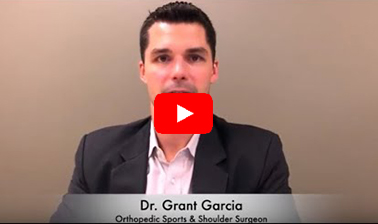Pediatric MPFL Reconstruction
Pediatric MPFL Reconstruction with Prochondrix for Cartilage Repair

Pediatric MPFL Reconstruction: Ensuring Patellar Stability in Growing Children
Medial Patellofemoral Ligament (MPFL) reconstruction is a specialized surgical procedure designed to address patellar instability, a common issue in pediatric patients. This instability often results from trauma or congenital conditions and can significantly impact a child's mobility and quality of life. Pediatric MPFL reconstruction is particularly tailored to accommodate open growth plates, making it a critical intervention in young patients. This section provides a comprehensive overview of the background, indications, surgical procedure, risks, outcomes, and conclusions related to pediatric MPFL reconstruction.
Background
Patellar instability in children often arises from dislocation or subluxation of the patella. The medial patellofemoral ligament plays a crucial role in stabilizing the patella, preventing it from dislocating laterally. In pediatric patients, the challenge lies in addressing this instability without disrupting the open growth plates, which are essential for normal bone growth and development.
Pediatric MPFL reconstruction has become a preferred method to restore patellar stability in children. Unlike adult procedures, pediatric MPFL reconstruction must account for the ongoing growth of bones and the unique anatomical considerations of younger patients. This procedure aims to stabilize the patella, allowing children to return to normal activities and preventing further complications associated with recurrent dislocations.
Indications
Dr. Grant H. Garcia Talks About Patella Dislocations & Treatment
Pediatric MPFL reconstruction is indicated in several scenarios, primarily revolving around patellar instability. Key indications include:
- Recurrent Patellar Dislocations: Children who experience multiple patellar dislocations despite conservative treatments such as physical therapy and bracing.
- Patellar Subluxation: Frequent subluxation episodes causing pain and functional limitations.
- Traumatic Dislocation: Severe traumatic dislocation of the patella requiring surgical intervention to restore stability.
- Congenital Conditions: Congenital patellar instability or malalignment not amenable to conservative management.
- Failed Conservative Treatment: Persistent instability and symptoms despite appropriate non-surgical interventions.
The Surgery
Dr. Garcia demonstrates his MPFL reconstruction technique to treat recurrent patella dislocations
Pediatric MPFL reconstruction is a highly specialized procedure that involves reconstructing the medial patellofemoral ligament to restore patellar stability. The surgery is tailored to the needs of growing children, ensuring that it does not interfere with their growth plates.
- Preoperative Planning: Detailed imaging studies, including X-rays and MRI, are conducted to assess the anatomy and plan the surgical approach. Special consideration is given to the open growth plates to avoid damage during surgery.
- Anesthesia: The procedure is performed under general anesthesia to ensure the child is comfortable and pain-free.
- Incision and Exposure: A small incision is made on the medial side of the knee to access the patella and femur.
- Graft Harvesting: A graft, typically from the patient’s hamstring tendon, is harvested to reconstruct the MPFL. In some cases, an allograft may be used.
- Tunnel Creation: Small tunnels are carefully drilled into the patella and femur, avoiding the growth plates, to secure the graft.
- Graft Placement: The graft is threaded through the tunnels and anchored in place using sutures or small screws. Care is taken to ensure the graft tension is appropriate to stabilize the patella without restricting movement.
- Closure: The incision is closed using sutures, and the knee is bandaged.
Risks
Dr. Garcia’s pediatric technique for MPFL reconstruction to save the patient’s growth plates
As with any surgical procedure, pediatric MPFL reconstruction carries potential risks and complications. These include:
- Infection: Postoperative infections can occur, requiring antibiotics or additional surgery.
- Bleeding and Hematoma: Excessive bleeding during or after the procedure can lead to hematoma formation.
- Neurovascular Injury: Damage to surrounding nerves and blood vessels, though rare, is a potential risk.
- Growth Plate Injury: Accidental damage to the growth plates can affect bone growth and development.
- Graft Failure: The reconstructed ligament may fail, necessitating revision surgery.
- Stiffness and Loss of Motion: Postoperative stiffness may require physical therapy or further surgical intervention.
- Residual Instability: Despite surgery, some patients may continue to experience patellar instability, requiring additional treatments.
Outcomes
The success of pediatric MPFL reconstruction is measured through various parameters, including knee stability, pain relief, functional improvement, and patient and parent satisfaction. Clinical studies and patient reports generally indicate favorable outcomes:
- Knee Stability: Pediatric MPFL reconstruction effectively stabilizes the patella, significantly reducing the incidence of dislocations and subluxations. Post-surgery, patients typically report a marked improvement in knee stability.
- Pain Relief: By addressing the underlying instability, the procedure alleviates pain associated with recurrent dislocations.
- Functional Improvement: Children often experience enhanced knee function, allowing them to resume daily activities and sports with greater confidence and less discomfort.
- Patient and Parent Satisfaction: High levels of satisfaction are commonly reported, attributed to significant improvements in stability, pain, and overall knee function.
Conclusion
Pediatric MPFL reconstruction represents a crucial advancement in the surgical management of patellar instability in growing children. This procedure offers a reliable solution for young patients who have not found relief through conservative measures or previous surgeries. By reconstructing the medial patellofemoral ligament while preserving the integrity of open growth plates, pediatric MPFL reconstruction provides lasting improvements in knee function and quality of life.
However, it is essential to recognize that pediatric MPFL reconstruction is a complex procedure with potential risks and complications. Success depends on careful patient selection, meticulous surgical technique, and comprehensive postoperative care. Parents and patients considering pediatric MPFL reconstruction should engage in thorough discussions with their orthopedic surgeon to understand the benefits, risks, and expected outcomes.
As advancements in surgical techniques and postoperative rehabilitation continue to evolve, the future of pediatric MPFL reconstruction looks promising, offering renewed hope for children suffering from debilitating patellar instability. With the right approach, pediatric MPFL reconstruction can restore stability, function, and confidence, enabling young patients to return to their active lifestyles with minimal limitations.























